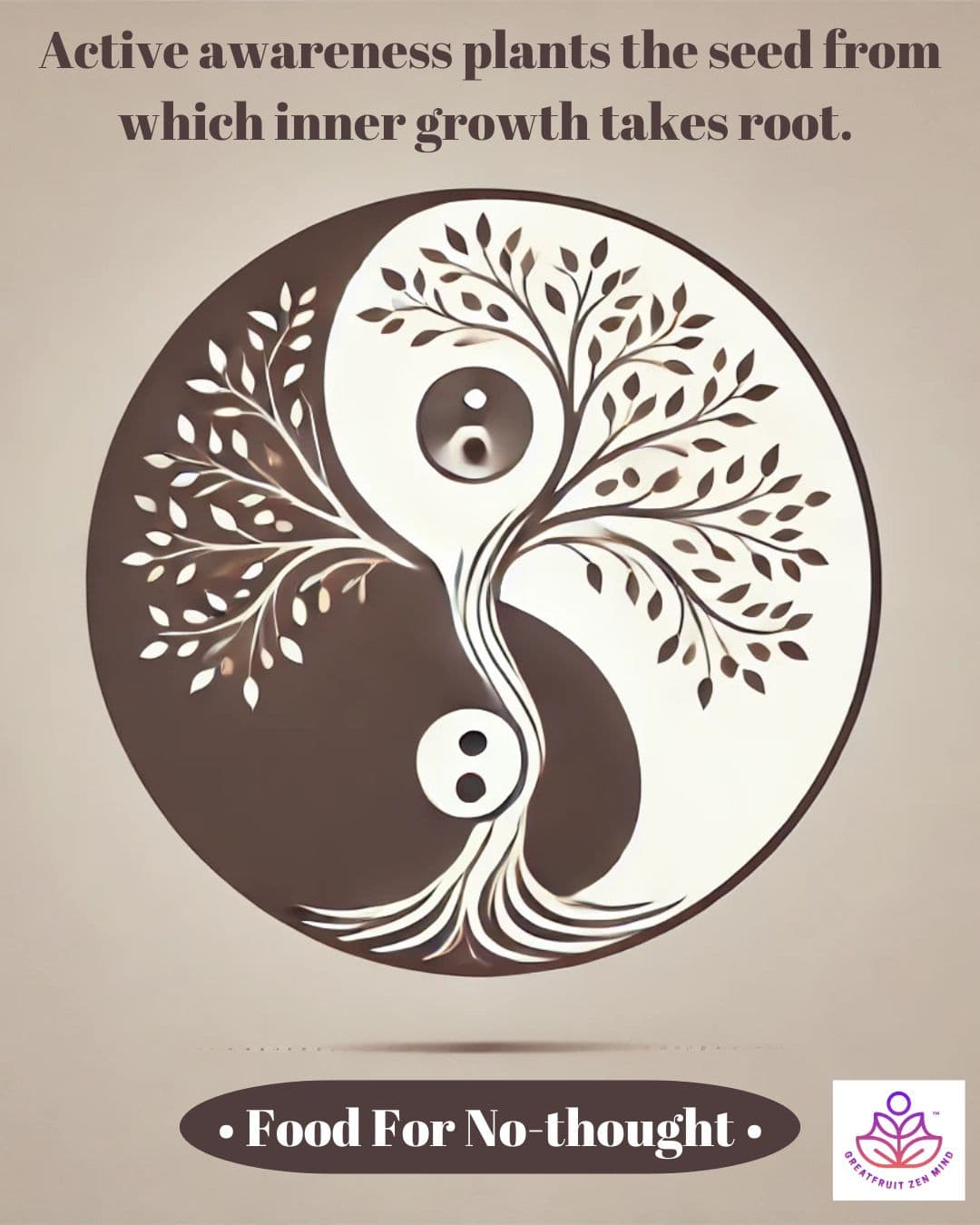Read time 5 minutes. Zen in not disinterested. Disinterest numbs. Active Awareness sharpens.
Last week, while looking at acceptance, we discovered how easy it is to slip into subtle bias. We may force a kind of enthusiasm that isn’t really there, and when we can’t maintain it, frustration follows. Neutrality offers relief—but if we swing too far, we risk falling into indifference. So how do we avoid both illusions, false positivity on one side and stale passivity on the other?
By recognizing that awareness, while neutral, must remain active.
Neutral, yet fully engaged
Neutrality does not mean opting out of life. Choosing not to dive into conflict is not the same as sitting idly on the sidelines. Often it means our doing becomes quieter, more subtle, more inward.
The middle way opens before us when we step out of the extremes. And this middle way is not dull—it is alive. Active awareness carries every bit of joy and vitality we could hope for, but without the distortions of ego’s clinging and resistance.
Opting into life
The difference between disengaged apathy and engaged interest is critical. Not joining in does not mean disinterest. Instead of being selectively interested in some things and not others, we are interested in everything—universally, equally.
This is where non-duality reshapes the view. Duality breeds bias: self versus world, challenge versus reaction, judgment versus circumstance. Soon we are not dealing with the challenge at hand but with the emotional aftershocks of our own bias.
Active awareness interrupts this spiral. From one angle, none of it is us. From another, all of it is us. Either way, the grip of identity loosens, and bias loses its edge. What remains is clarity—clarity of purpose, thought, and response.
Active awareness in practice
Faced with a challenge, we usually default to extremes. Avoidance: It’s too much, I can’t deal. Or passive acceptance: Woe is me, why must I suffer? Both are passive, and both are negative in flavor.
Active awareness begins differently. Our first act is always awareness itself—directing attention without preference. Before anything else, we meet our emotions.
This does not mean diagnosing or interpreting them. Emotions are rarely as meaningful as we think—they shift with conditions, illusions that cloud vision more than they clarify.
But we don’t push them away either. We remain open, allowing, observing. We stay engaged without being consumed. Often, emotions dissolve on their own once stripped of ownership.
Awareness and the ego’s agendas
The ego thrives on conflict. It feels important when things are dramatic, useful when problems arise. But this is its game—conflict as self-justification.
Active awareness makes space for these antics without being pulled into them. There is room for conflict, room for ego, but no compulsion to act from them.
As Joseph Goldstein once said: “When people ask me now what I practice—is it vipassana or dzogchen?—I say that it is ‘not-clinging.’ The practice has become that simple: not-clinging, and then moments of recognizing clinging, and then not-clinging, and so on.”
This is the heart of active awareness: nimble, seamless, guided moment by moment.
The real-world gift
At first, the benefits may feel small—perhaps you hold your tongue more easily, whether with friends or strangers. Yet even small shifts ripple outward. People notice when you’re less reactive, less self-indulgent in your sighs, eye rolls, or frustrations.
Patience is contagious. As you soften, others soften too. Conflicts become less contentious, more equal. Disagreements resolve faster. Space opens for honesty without hostility.
Non-reactivity disarms. It transforms relationships. It makes room for enjoyment.
Presence with everything
Emotions, judgments, and expectations still arise. But what does it mean to sit with sadness without the demand that it vanish? To neither chase nor cling?
The same shift that transforms our relationships also transforms our inner life. Sadness is allowed, and in turn, it allows us to be.
Non-attachment is not indifference. It is openness. Not preference for happy over sad, but immersion in what is. This is presence. This is what it means to participate in every moment without being enslaved by it.
Avoidance is not easier
Some may think this sounds like endless vigilance, always being on. But passive awareness carries its own costs. Left unchecked, it leads to unconscious reactions—mental, physical, and emotional—that drain us.
Active awareness, by contrast, stays ahead of the curve. It is dynamic, energetic, nimble, diligent. These are not burdens. They are the qualities of a well-lived life.
Life is happening all around us. Active awareness means we’re here for it.
Explore more:
If you have enjoyed these last two articles, you might also enjoy this complete series regarding acceptance in our Foundations archive.
Additionally, this article, “Paying Attention No Matter What,” by Domyo Burk on Bright Way Zen offers a very down to earth conversation about the nature of attention and how we can direct it. The gateway to transcendent peace is discovered within life as we find it, but what if life as we find it isn’t exciting or interesting as we might prefer?
“Amazingly, life experienced without interpretation in terms of our desires is… precious beyond description.” The disdain that we have for the mundane is on or our greatest teachers.
–
Thanks for visiting Greatfruit Zen Mind.
We want to hear from you.
→ Join The Undercurrent.


Leave a Reply